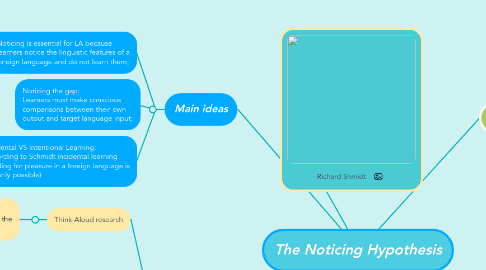The Noticing Hypothesis
by Milena Dagueva


1. Richard Shmidt
2. Main ideas
2.1. Noticing is essential for LA because learners notice the linguistic features of a foreign language and do not learn them;
2.2. Noticing the gap: Learners must make conscious comparisons between their own output and target language input;
2.3. Incidental VS Intentional Learning: According to Schmidt incidental learning (reading for pleasure in a foreign language is certanly possible)
3. Empirical studies
3.1. Think-Aloud research
3.1.1. It provided with a *window* into mental processes, but it can also interfere with the main task -> unclear results
3.2. Eye-tracking Godfroid, Housen & Boers, 2010
3.2.1. What: explore learners’ noticing of new words in the absence of any external intervention
3.2.2. Implications: As the learners become more proficient, they attend less attention to the mismatches between their interlanguage and the target language.
3.2.3. Results: When learners spontaneously shift their attention to linguistic form, they extract potentially useful information from the L2 input
